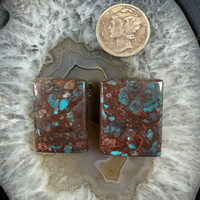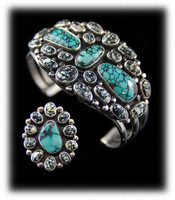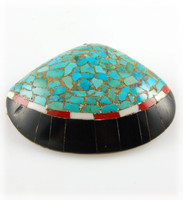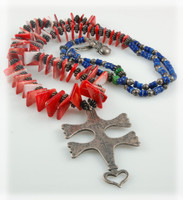 Loading... Please wait...
Loading... Please wait...- 970-759-1040 Text / Voice
- Gift Certificates
- My Account
Currency Displayed in
- Home
- Turquoise Learning Center
- Turquoise Mines List
- Turquoise
- Tibetan Turquoise
Categories
Tibetan Turquoise
Tibetan Turquoise
Tibetan Turquoise
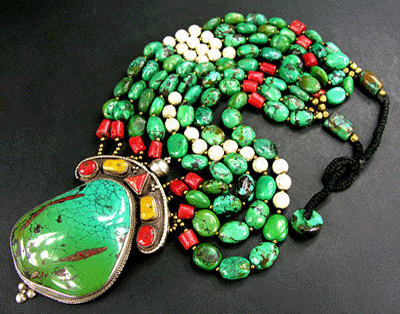
Tibetan Turquoise is mined in the Himilayas, it is usually blue-green to green in color, clear blue that is found in American and Persian
Turquoise is very rare in Tibetan Turquoise. Tibetan Turquoise is most sought after by Nepalese and Tibetan people for its spiritual powers as well as its beauty. Turquoise has been a part of the people of the Himalayas for thousands of years, they consider Tibetan Turquoise to be secured for its metaphysical and spiritual values. Most every person in the Himalayas has and wears Turquoise in one form or another, it is very rare to find a Tibetan or Nepalese person without Turquoise as it is a very spiritual and religious stone in that part of the world.
Himilayans people value Tibetan Turquoise and Turquoise Beads for its powers, it is the most prized stone among the Tibetan people. To the Tibetans, Turquoise is viewed as the sky stone, brought to earth from the heavens above. Turquoise has been has been a important religious stone used by the Tibetans since 1000 B.C. or earlier.
Tibetan children are always given a piece of Tibetan Turquoise Jewelry as it is believed it will keep them from falling. As Tibetan people age they keep trading up their Tibetan Turquoise for larger and more beautiful pieces to their eye as they feel the bigger the stone and the higher the quality it is, the more power their Turquoise has for them. Turquoise is highly appreciated by Tibetans not only for preserving the family wealth but also for its ritual and medicinal purposes. "Gyu" (pronounced "yu") is the name for Turquoise to the Tibetans, it is indigenous and they feel knowledge from the mineral comes from within the Turquoise and not through outside influences. In other words, Tibetans feel that Turquoise Stones have many powers and values within the stone itself. Tibetan people call it Turquoise, not a Turquoise Stone or a Stone - they believe Turquoise is a thing distinct in itself. An inspiration to all Tibetans is that there are no two Turquoise Gems alike, each gem is a vibrating essence of atoms and is a phenomenon distinct in itself!
Most Tibetans wear pouches or other items hung from their necks or attached to some other part of the body,
the objects are embellished with Tibetan Turquoise. Most Tibetans also adorn their homes with prayer-wheels, musical pieces, bells, vases and other artifacts that are inlayed or decorated with Tibetan Turquoise. Turquoise plays a major part in most every family throughout the Himilayas and is worshiped for its beauty as well as its spiritual values as an absolute way of spiritual life.
It is very important to Tibetans as well as the people throughout the Himilayas that their personal Turquoise is in its natural state. They feel when Tibetan Turquoise is altered it does not possess its metaphysical powers and is not able to be in harmony with the human body. Turquoise is a porous mineral and absorbs oils and body fluids which affect its colour and consistancy when unaltered. Himalayan people recognise that the change of colour in a Turquoise Gem is the direct result of variations in the state of the owner’s health. Turquoise grows paler and usually takes on hues of green as the owner sickens or grows old, it loses its color and intensity entirely at death. Turquoise will completely recover its inherent qualities and beauty when a new and healthy person possesses it. Healers and believers in Turquoise feel that Turquoise is susceptible to the personality of the wearer, a gem must be treated with affection and regarded as a sentient being. It is also believed that Tibetan Turquoise will bring happiness and good fortune to its owner if it was given by a loving hand, it is sympathetic not only to the wearer’s health but also to the giver. It is believed that Turquoise will become paler in colour if he or she is threatened by evil. Turquoise is often used as a token of love by Himalayan people, Tibetan Turquoise is presented by a lover to his loved one, its colour will remain permanent as long as the lover’s affection lasts.
Tibetan Turquoise is officially registered as a medicament in several medical works of the Sanskrit texts. Healing Art Practitioners
of gem therapy generally accept that there are three methods of applying Turquoise for medicinal purposes. Allowing the patient to observe the Turquoise or by allowing a patient to touch and feel it are the first two ways which uses the gemstone mainly as a tool and aid to the healer's power of suggestion. The third way is by prescribing it as a powder usually mixed in with other preparations, such as herbs and animal products. For its use as a medicinal preparation, Tibetan turquoise must be crushed as finely as possible. The resulting mixtures are frequently prescribed for liver complaints, anaemia and hysteria (copper, one of the main ingredients of turquoise is found chiefly in the liver as well as in the blood and nerve cells).
Tibetan Healers also believe the effects of colour in a gemstone are also worth noting as each individual Tibetan Turquoise piece has a particular colour spectrum that he or she is working with for the major portion of an embodiment. Many people usually have few specific colours around them in their daily routines, however, frequently a need arises for a colour from the opposite end of the spectrum to maintain both physical and inner balance for some people. The dark-red colour worn by the sangha is effectively balanced by the blue and blue-green of turquoise. Jewelry with fine blue gems are worn for healing purposes by people with tired and bloodshot eyes.
There are four sources of Tibetan Turquoise; The finest material comes from an area in the Gangschan Mountains of Ngari-Khorsum in Western Tibet. Another area is in the region between Lhasa and the China-Tibetan border near the town of Chamdo which is about 400 miles north-east of Lhasa. There is another location at Draya to the west of Bathang, and the fourth area is in the mountains of the state of Derge in Eastern Tibet.
Tibetan Turquoise Examples
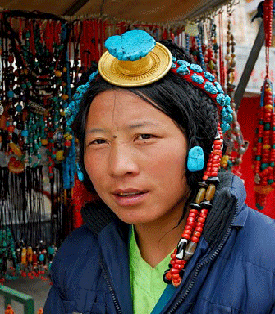 |
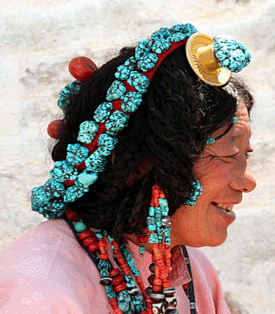 |
Above are two Tibetan women dressed in their Turquoise attire. These are women that are rich in culture and are likely to be dressed for an ocassion or possibly for the day at the marketplace. Tibetans love Turquoise and often wear Red Coral in conjunction with it. Tibetans feel Red Coral is of the oppisit spectrum of colour than Turquoise which has a spiritual effect on daily life.
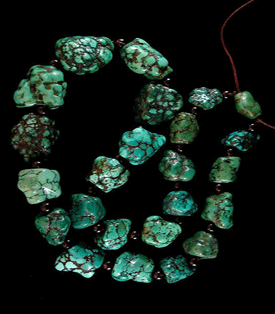 |
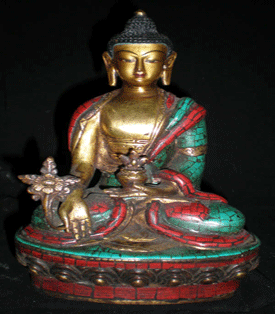 |
The Turquoise Beads on the left are a good example of the colour of Tibetan Turquoise. Notice the Turquoise-Blue to Green colours of the beads, this is very typical of Tibetan Turquoise. It is believed Tibetans have been making and wearing Turquoise beads for at least 500 years. The Budda on the right is a classic piece of statuary that you may see in a home or special place of prayer in Tibet as well as other places in the Himilaya's.
More Tibetan Turquoise Examples
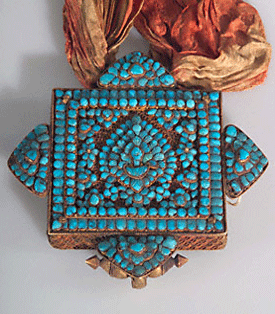 |
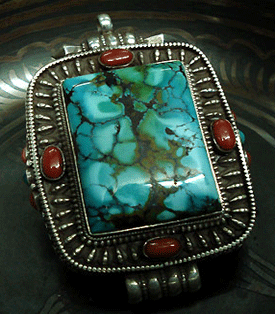 |
Here are two pieces of Tibetan Turquoise Jewelry that is typical of the Jewelry that is made in Tibet. The box on the left is embelished with clusters of Turquoise to make a geometric mosiac design. Tibetan Turquoise Boxes like this are worn arround the neck by Tibetan and Nepalese people. The Tibetan Turquoise Pendant on the right was made in Tibet and has red coral accenting the Turquoise pendant.
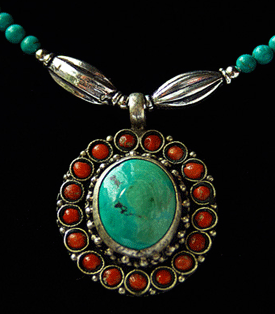 |
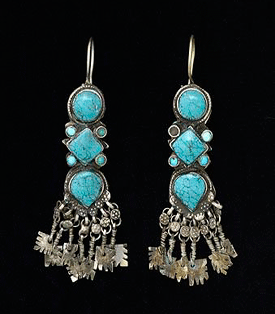 |
Tibetans love the Turquoise and Red Coral combination as they believe in Chakra which is related to the colours of life. They believe Red Coral and Turquoise are opposite spectrums of colour. Life is influenced by colour which has an effect on the way we think and feel in our daily life. Opposite colours enhance our lives and make us feel good. On the right is a pair of Tibetan Turquoise Earrings, although half way around the world with no common relation to each other, it is interesting how much Tibetan turquoise Jewelry resembles American Indian Turquoise Jewelry.
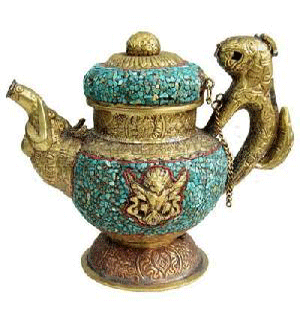 |
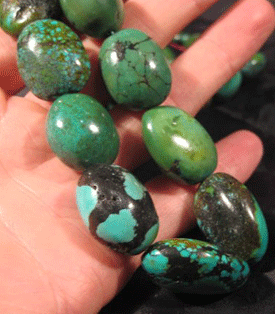 |
This vessel, inlayed with Turquoise is typical of what you may see in a home in Tibet or in the Himilayas. Native Peoples from this part of the world worship Turquoise and feel it protects them from evil and keeps them in good health and harmony in life. The Tibetan Turquoise Beads on the right are Tibetan Turquoise and made into beads in Tibet. Tibetan Turquoise Beads like this have been worn by Tibetans and Himilayans for well over 500 years.
Durango Silver Company respects the beliefs of the Tibetans and Himilayans and have some of the same beliefs ourselves. We do believe Turquoise is a very spiritual gemstone and should be respected. We have been collectors, dealers and consumers of Turquoise ourselves and we are honourable about our business of producing high quality authentic Turquoise Jewelry and offering it to our friends and clients.
We hope you have enjoyed our presentation on Tibetan Turquoise and have gained some useful knowledge from it. We invite you to learn more about Turquoise and Turquoise Jewelry by following the links in our Learning Center to other informational pages that we have written on different topics related to Turquoise Jewelry. In addition, we would like to invite you to join our E-Mail Newsletter - about once every other month we send out a Newsletter to inform our members of what's happening with Durango Silver Company, new products, specials for our members and more. We also have a monthly drawing from our member base to give away Free Turquoise Jewelry from our company. Please take a moment to become one of our friends by signing in below. Thank you for reading about our Tibetan Turquoise.







